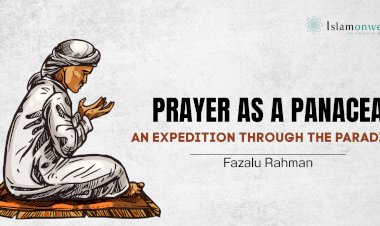The Forenoon Prayer (Ṣalāt al-Ḍuḥā): A Comprehensive Juristic Overview
The Virtue of Ṣalāt al-Ḍuḥā
Ṣalāt al-Ḍuḥā is a Sunnah prayer established by the Prophet ﷺ and performed during the forenoon hours. The term al-ḍuḥā refers to the part of the day when the sun has risen and the light begins to spread. It is named so because it is the time when things become visible and illuminated. The classical lexicons—Lisān al-ʿArab by Ibn Manẓūr and al-Tawqīf ʿalā Muhimmāt al-Taʿārīf by al-Ḥaddādī—explain that al-ḍuḥā begins after sunrise and continues until the sun reaches its highest point before midday (zawāl). Some scholars describe it as the period when the sun has risen to a quarter of the sky, and its brightness is well established.
Ṣalāt al-Ḍuḥā carries a special virtue as an act of daily gratitude to Allah ﷻ. The Prophet ﷺ taught that every joint in the human body owes a form of charity each day. While many actions such as glorifying Allah (tasbīḥ), praising Him (taḥmīd), proclaiming His oneness (tahlīl), and enjoining good count as charity, two rakʿahs of ḍuḥā prayer suffice for all.
Abū Dharr al-Ghifārī رضي الله عنه narrated that the Messenger of Allah ﷺ said:
“Each morning, charity is due from every joint in your body. Every tasbīḥah is a charity, every taḥmīdah is a charity, every tahlīlah is a charity, every takbīrah is a charity, enjoining good is a charity, and forbidding evil is a charity. And all this is fulfilled by praying two rakʿahs of ḍuḥā.”
(Ṣaḥīḥ Muslim)
A Prophetic Legacy and Daily Practice
The Prophet ﷺ not only observed Ṣalāt al-Ḍuḥā himself but also advised his close companions to uphold it regularly. It became part of their daily spiritual regimen.
Abū Hurayrah رضي الله عنه reported:
“My beloved ﷺ advised me to do three things which I will not leave until I die: fasting three days of each month, praying ḍuḥā, and sleeping upon witr.”
(Ṣaḥīḥ al-Bukhārī)
Similarly, Abū al-Dardāʾ رضي الله عنه said:
“My beloved ﷺ advised me with three things which I shall not abandon as long as I live: fasting three days each month, praying ḍuḥā, and not going to sleep without having prayed witr.”
(Ṣaḥīḥ Muslim)
These personal recommendations from the Prophet ﷺ reflect his care for the spiritual growth of his companions and highlight the significance of Ṣalāt al-Ḍuḥā as part of a consistent and balanced devotional life.
The majority of scholars—including Imāms Mālik, al-Shāfiʿī, and Aḥmad ibn Ḥanbal—consider Ṣalāt al-Ḍuḥā a sunnah mu’akkadah (confirmed Sunnah). According to Abū Ḥanīfah, it is mandūb (recommended). Imām al-Nawawī states:
“Ṣalāt al-ḍuḥā is a confirmed Sunnah, and this is our view and that of the majority of the early generations (salaf) and the later jurists.”
When to Perform Ṣalāt al-Ḍuḥā
The timing of Ṣalāt al-Ḍuḥā begins after the sun has fully risen above the horizon by the length of a spear (qīd rumḥ), as estimated by the naked eye. This has been approximated by scholars to be about 15 -20 minutes after sunrise, though it may vary slightly depending on location and season.
The time for Ṣalāt al-Ḍuḥā then continues until just before the sun reaches its zenith (zawāl), at which point the time becomes unsuitable for any prayer. Jurists describe this final moment -ʿinda al-istiwāʾ, when the sun is at its highest point - as a brief and imperceptible interval, insufficient to accommodate even two rakʿahs. Al-Khaṭīb al-Shirbīnī notes in Mughnī al-Muḥtāj that this is a very narrow period, almost unnoticeable, and that although it rarely registers with laypeople, it remains a prohibited time for prayer. Let’s say that 3-4 minutes before Dhuhr azan.
However, the most virtuous time to pray it is in the later part of this period, when the heat of the sun begins to intensify.
Zayd ibn Arqam رضي الله عنه reported that the Messenger of Allah ﷺ said:
“The prayer of the penitent (ṣalāt al-awwābīn) is when the young camels feel the heat of the sand.”
(Ṣaḥīḥ Muslim)
Imām al-Nawawī explains:
“The phrase “Tarmāḍ al-fiṣāl” which means when the hooves of the young camels are scorched by the hot ground, indicates the latter part of the ḍuḥā time. These young camels, due to the sensitivity of their hooves, separate from their mothers as the heat becomes intense. This time is considered more virtuous because people naturally seek rest then, and offering prayer during it reflects greater devotion.”
Minimum Number of Rakʿahs in Ṣalāt al-Ḍuḥā
There is unanimous agreement among the scholars that the minimum number of rakʿahs for Ṣalāt al-Ḍuḥā is two. This is based on clear textual evidence from the Sunnah.
Abū Hurayrah رضي الله عنه said:
“My Prophet ﷺ advised me to pray two rakʿahs of ḍuḥā.”
(Ṣaḥīḥ al-Bukhārī)
Similarly, Muʿādh ibn Anas al-Juhanī رضي الله عنه narrates from his father that the Messenger of Allah ﷺ said:
“Whoever remains seated in his prayer place after the morning prayer, remembering Allah and speaking only good, then prays two rakʿahs of ḍuḥā, all his sins will be forgiven, even if they are as much as the foam of the sea.”
(Sunan Abī Dāwūd)
All four schools of Islamic jurisprudence agree that the minimum number of rakʿahs for Ṣalāt al-Ḍuḥā is two. However, they differ on what is preferable beyond that.
According to the Ḥanafī school, it is mandūb (recommended) to pray four rakʿahs or more, with the preferred time being after a quarter of the day has passed. This is noted by Imām ʿAlāʾ al-Dīn al-Ḥaṣkafī in al-Durr al-Mukhtār. In al-Minyah, it is explicitly mentioned that the minimum is two rakʿahs. Ibn ʿĀbidīn, in his commentary Radd al-Muḥtār, confirms that this position is also supported in works like al-Ghaznawiyyah, al-Ḥāwī, al-Sharʿah, and al-Samarqandiyyah. He adds that while two rakʿahs represent the minimal fulfillment, four rakʿahs mark the beginning of the complete practice.
Within the Mālikī school, scholars such as Imām Shihāb al-Dīn al-Nafrāwī state in al-Fawākih al-Dawānī that Ṣalāt al-Ḍuḥā is a confirmed nāfilah (supererogatory act), and its minimum is two rakʿahs.
In the Shāfiʿī tradition, Imām al-Nawawī affirms in al-Majmūʿ that Ṣalāt al-Ḍuḥā is a confirmed Sunnah and should not be performed with fewer than two rakʿahs.
As for the Ḥanbalī school, Imām Abū al-Saʿadāt al-Buhūtī, in Daqāʾiq Ūlī al-Nuhā, maintains that Ṣalāt al-Ḍuḥā is Sunnah, and its minimum is two rakʿahs. He notes that there is no report indicating the Prophet ﷺ ever prayed less than two rakʿahs for this prayer.
The Maximum Number of Rakʿahs in Ṣalāt al-Ḍuḥā
While the jurists agree that the minimum number of rakʿahs for Ṣalāt al-Ḍuḥā is two, they differ on the maximum. This variation arises from differing interpretations of the Prophet’s ﷺ practice and statements.
Twelve Rakʿahs: View of the Ḥanafīs and Some Shāfiʿīs
The Ḥanafī school, along with leading Shāfiʿī scholars such as Imām al-Rūyānī and Imām al-Rāfiʿī, hold that the maximum number is twelve rakʿahs. This view is based on the ḥadīth narrated by Anas ibn Mālik رضي الله عنه:
“Whoever prays twelve rakʿahs of ḍuḥā, Allah will build for him a palace of gold in Paradise.”
(Reported by al-Tirmidhī and Ibn Mājah)
They also refer to the narration of ʿAbd Allāh ibn ʿUmar رضي الله عنهما, in which Abū Dharr رضي الله عنه relayed the Prophet’s ﷺ detailed encouragement for varying numbers of rakʿahs in ḍuḥā:
“If you pray two rakʿahs of ḍuḥā, you will not be recorded among the heedless. If you pray four, you will be written among the righteous. If you pray six, you will be written among the devout. If you pray eight, you will be written among the successful. If you pray ten, no sin will be recorded for you that day. If you pray twelve, Allah will build for you a house in Paradise.”
(Reported by al-Bayhaqī in al-Sunan al-Kubrā and al-Bazzār in al-Musnad)
However, these scholars regard eight rakʿahs as preferable, as they are established through both the action and the statement of the Prophet ﷺ. According to Imām al-Ṭaḥṭāwī in his Ḥāshiyah ʿalā Marāqī al-Falāḥ, the most complete form is twelve rakʿahs, but eight is the superior and balanced number due to its alignment with prophetic practice. Imām al-Rāfiʿī, in Fatḥ al-ʿAzīz, also supports this, stating that while the maximum is twelve, eight is best based on narrations from the Prophet ﷺ.
Eight Rakʿahs: Mālikīs, Ḥanbalīs, and Majority of Shāfiʿīs
Many Mālikī scholars, the majority of the Shāfiʿīs (including the relied-upon position), and the Ḥanbalīs, limit the maximum number to eight rakʿahs. This is based on the ḥadīth of Umm Hānīʾ رضي الله عنها:
“On the day of the Conquest (of Makkah), the Messenger of Allah ﷺ prayed the forenoon prayer (subḥat al-ḍuḥā) as eight rakʿahs, saying the salām after every two.”
(Reported by Aḥmad in al-Musnad, Abū Dāwūd, and Ibn Mājah)
Also, Anas رضي الله عنه said:
“I saw the Messenger of Allah ﷺ, during travel, pray the forenoon prayer (subḥat al-ḍuḥā) as eight rakʿahs.”
(Reported by al-Ḥākim in al-Mustadrak and he authenticated it)
Imām al-Kharashī, in his Sharḥ Mukhtaṣar Khalīl, confirms that the maximum according to the Mālikī school is eight. Shams al-Dīn al-Khaṭīb al-Shirbīnī, in al-Iqnāʿ, echoes this as the authoritative Shāfiʿī view. Likewise, Imām Ibn Qudāmah al-Maqdisī states in al-Mughnī that the Ḥanbalī position holds the maximum to be eight rakʿahs, relying on the narration of Umm Hānīʾ.
No Fixed Limit: Views of al-Ṭabarī, al-Bājī, and Others
Some scholars, including Imām Abū Jaʿfar al-Ṭabarī, Imām al-Bājī from the Mālikī school, and al-Ḥalīmī from the Shāfiʿīs, hold that Ṣalāt al-Ḍuḥā does not have a restricted upper limit. It is considered among the desirable voluntary prayers that may be increased or reduced based on one’s capacity. They cite the ḥadīth of ʿĀʾishah رضي الله عنها:
“The Messenger of Allah ﷺ used to pray four rakʿahs during ḍuḥā, and would increase as Allah willed.”
(Ṣaḥīḥ Muslim)
They also point out that the Prophet ﷺ is authentically reported to have prayed ḍuḥā in various counts: two, four, six, and eight rakʿahs. Likewise, the Companions also differed in practice some prayed two, others four or more. References to this are found in Fatḥ al-Bārī by Ibn Ḥajar and Tanwīr al-Ḥālik by al-Suyūṭī.
Imām al-Bājī's opinion that there is no maximum number was regarded as correct by later scholars. Imām Muḥammad al-Bunānī, in his Ḥāshiyah ʿalā Sharḥ al-Zurqānī, quotes al-Bājī’s view and confirms its validity. Furthermore, Imām al-Misnawī reconciles this opinion with the Mālikī statement that the maximum is eight, clarifying that the figure of eight refers only to the number established by narration not that praying more is discouraged. Thus, there is no contradiction between al-Bājī’s opinion and that of the rest of the Mālikī school.
Structure of Ṣalāt al-Ḍuḥā and Sūrahs to be Recited
Ḍuḥā prayer shall be offered individually. It is generally agreed among scholars that Ṣalāt al-Ḍuḥā is not a prayer for which congregational performance (jamāʿah) is prescribed. However, if it is performed in congregation occasionally, without establishing it as a habitual practice, it’s permissible.
Imam Ibn Hajar Al-Haytami says in Tuḥfat al-Muḥtāj
“Among the prayers for which congregation is not legislated is al-ḍuḥā.”
Regarding how the prayer is structured, Tuḥfat al-Muḥtāj states that the preferred practice is to offer salām after every two rakʿahs. Nevertheless, Ḥāshiyat al-Sharwānī mentions that it is permissible to pray all eight rakʿahs with a single salām, and that it is valid to perform one tashahhud at the end, or alternatively, to include a tashahhud after every even-numbered unit—whether two or four.
As for what to recite in Ṣalāt al-Ḍuḥā, scholars have mentioned various preferred sūrahs. Among Ḥanafī jurists, Ibn ʿĀbidīn notes that it is recommended to recite Sūrat al-Shams (وَالشَّمْسِ وَضُحَاهَا) and Sūrat al-Ḍuḥā (وَالضُّحَى) in the two rakʿahs of this prayer. His wording suggests that this preference applies even if one prays more than two rakʿahs. This is supported by a narration from ʿUqbah ibn ʿĀmir رضي الله عنه, who said:
"The Messenger of Allah ﷺ commanded us to pray ḍuḥā with sūrahs such as: wa’l-shamsi wa ḍuḥāhā and wa’l-ḍuḥā."
Within the Shāfiʿī school, Nihāyat al-Muḥtāj mentions that it is recommended to recite Sūrat al-Kāfirūn and Sūrat al-Ikhlāṣ in the two rakʿahs of ḍuḥā. These two sūrahs are considered more virtuous in this context than al-Shams and al-Ḍuḥā, despite the latter also being mentioned in reports, this is because al-Ikhlāṣ is equivalent to one-third of the Qurʾān, and al-Kāfirūn equals one-fourth, without considering multiplied reward.
Al-Shabrāmalīsī, another prominent Shāfiʿī jurist, adds that these two sūrahs (al-Kāfirūn and al-Ikhlāṣ) may also be recited when praying more than two rakʿahs. However, he clarifies that if one prays four or six rakʿahs in one iḥrām (opening takbīr), then it is not recommended to recite an additional sūrah after the first tashahhud. This follows the general ruling for all Sunnah prayers that include two tashahhuds, a sūrah is not recited after the first one.
In conclusion, Ṣalāt al-Ḍuḥā stands as a noble Sunnah, rich in spiritual reward and rooted in the practice and counsel of the Prophet ﷺ. Whether performed with just two rakʿahs as a minimal gesture of gratitude, or extended to multiple rakʿahs as an expression of devotion, it offers a daily opportunity to reconnect with Allah ﷻ outside the obligatory prayers. While the scholars differed on the maximum number of rakʿahs and the preferred sūrahs to recite, they unanimously upheld its merit and recommended status. Observed individually and with sincerity, it remains one of the most accessible and rewarding voluntary prayers in our daily routine.
Classical and Juristic Sources:
- Ibn Manẓūr. Lisān al-ʿArab. Dār Ṣādir, vol. 14, p. 475.
- Zayn al-Dīn al-Ḥaddādī. al-Tawqīf ʿalā Muhimmāt al-Taʿārīf. ʿĀlam al-Kutub, p. 221.
- Imām al-Nawawī. al-Majmūʿ Sharḥ al-Muhadhdhab. Dār al-Fikr, vol. 4, p. 36.
- Ibn ʿĀbidīn. Radd al-Muḥtār ʿalā al-Durr al-Mukhtār. Dār al-Fikr, vol. 2, p. 23.
- ʿAlāʾ al-Dīn al-Ḥaṣkafī. al-Durr al-Mukhtār. Dār al-Kutub al-ʿIlmiyyah, p. 92.
- al-Ṭaḥṭāwī. Ḥāshiyah ʿalā Marāqī al-Falāḥ. Dār al-Kutub al-ʿIlmiyyah, p. 396.
- al-Rāfiʿī. Fatḥ al-ʿAzīz. Dār al-Fikr, vol. 4, pp. 257–258.
- al-Khaṭīb al-Shirbīnī. Mughnī al-Muḥtāj. Dār al-Fikr.
- Shihāb al-Dīn al-Nafrāwī. al-Fawākih al-Dawānī ʿalā Risālat Ibn Abī Zayd al-Qayrawānī. Dār al-Fikr, vol. 2, p. 271.
- Muḥammad ibn ʿAbd Allāh al-Kharashī. Sharḥ Mukhtaṣar Khalīl. Dār al-Fikr, vol. 2, p. 4.
- al-Khaṭīb al-Shirbīnī. al-Iqnāʿ fī Ḥall Alfāẓ Abī Shujāʿ. Dār al-Fikr, vol. 1, p. 117.
- Ibn Qudāmah al-Maqdisī. al-Mughnī. Maktabat al-Qāhirah, vol. 2, p. 97.
- al-Suyūṭī. Tanwīr al-Ḥālik Sharḥ Muwaṭṭaʾ Mālik. al-Maktabah al-Tijārīyah al-Kubrā, vol. 1, p. 129.
- Ibn Ḥajar al-ʿAsqalānī. Fatḥ al-Bārī bi-Sharḥ Ṣaḥīḥ al-Bukhārī. Dār al-Maʿrifah, vol. 3, p. 54.
- al-Shabrāmalīsī. Ḥāshiyah ʿalā Nihāyat al-Muḥtāj.
- al-Sharwānī. Ḥāshiyah ʿalā Tuḥfat al-Muḥtāj.
Online Fatwā Sources:
- Dar al-Iftaa al-Misriyyah. The Number of Rakʿahs for the Ḍuḥā Prayer.
Retrieved from: https://www.dar-alifta.org/ar/fatwa/details/19883 - Dar al-Iftaa al-Misriyyah. The Timing of the Ḍuḥā Prayer.
Retrieved from: https://www.dar-alifta.org/ar/fatwa/details/19918 - Islamweb. Beginning and End Time of the Ḍuḥā Prayer in Minutes.
Retrieved from: https://www.islamweb.net/ar/fatwa/126653 - Jordanian General Iftaa Department. What is the Ruling on Performing Ḍuḥā Prayer in Congregation?
Retrieved from: https://www.aliftaa.jo/encyclopedia/2214
Disclaimer
The views expressed in this article are the author’s own and do not necessarily mirror Islamonweb’s editorial stance.






















Leave A Comment